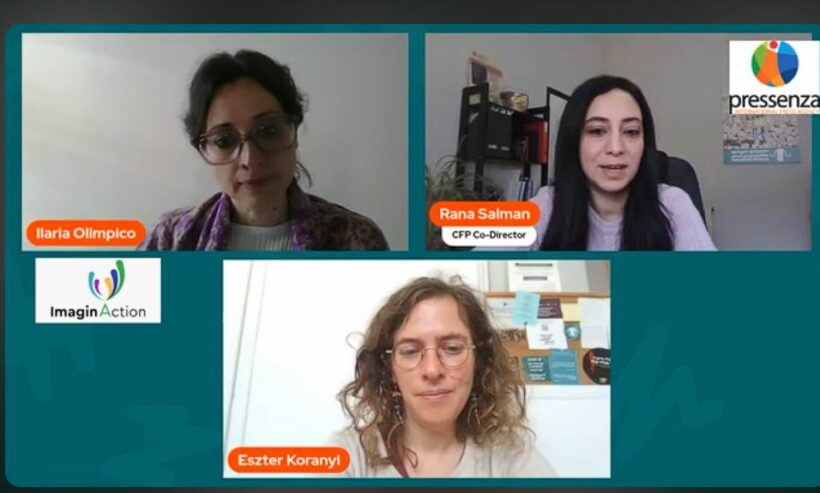Palestine-Israel: from one story to more than one story, from us vs them to togetherness, from cycle of violence to nonviolence, towards a Collective Liberation
There is no way to peace
Peace is the way
I interviewed Rana Salman and Eszter Koranyi, the two new co-directors of Combatants for Peace.
Meeting “the other” through his-her personal story and shifting the perspective through the others’ collective narrative
Letting people from the so-called two sides, Israelis and Palestinians, meet is one of the core activities of Combatants for Peace. They can meet through listening to each other’s stories, and work together to embody a future of justice and peace.
Meeting “the other” is not so obvious, because of the facts on the ground (the checkpoints, the wall…) and because of media-driven narratives that perpetuate division.
Both, Rana and Eszter, had the chance to meet “the other and the others’ narrative”, abroad.
As Eszter tells during the interview, she met the Palestinian narrative in Naples, thanks to her flatmate studying at Orientale University and being passionate about the Palestinian cause. The fact that Eszter was immersed in a multicultural experience made her more open to receive a different perspective. Originally from Hungary, with family members who survived the Holocaust, in the narrative she was exposed to, Israel was always “the safe place” to go “if it might happen again” and the occupation was an occupation of territories never of people. What she discovered in Naples was hard to receive and it took years to “really, really see the whole picture”.
Rana was meeting an Israeli in a program with Outward Bound Center Peacebuilding and Search for Common Ground which was a wilderness expedition, where she had a shift in her mindset: from a mindset “us versus them” to a mindset “together in a difficult journey”. She was able to be blind folded with an Israeli leading the way. It was about building trust and opening her mind.
Being women in a land trapped in a cycle of violence and being part of a nonviolent movement.
Rana and Eszter share that Combatants for Peace was more male dominant because it was founded by ex-combatants mostly men. Over the years, within the organization, this is changing, opening to more women and also to people that were not involved in violent actions. Today, two females, Rana and Eszter, are the two co-directors. “I realized that even if I was the only one, even if I was a minority in my own society, even if there was no gender equality, I needed to raise my voice” (Rana). Women can handle things in different ways, and call for reconciliation, containing everybody’s feelings. Research shows that if women are involved in the peace process the peace is more sustainable and lasts for a longer time.
Violence is not the only option. Even now, it is possible to hope and to choose nonviolence.
I invited Eszter and Rana to imagine a conversation with someone that is in fear and rage and can not believe in nonviolence.
Eszter shared a real conversation that happened in her life with one of the men who attended the tour guide course with her. They talked about “safety,” starting from very different ideas. After many one-sided conversations, after the war, they had a real dialogue, and in the end, the man said something like this: “The only big difference I see now between you and me is that you are optimistic, and I wish I had your optimism to believe that it can work without the use of violence.”
Rana underlined that this kind of shift, from fear and rage to trust and mind opening, occurs through a personal journey that everybody needs to go through.
They both were steadfast in affirming the power of little steps in everyday life, holding space for encounter and sharing, and the choice of nonviolence for Collective Liberation, Justice, Peace.
Ilaria Olimpico, ImaginAction
Integral interview:






